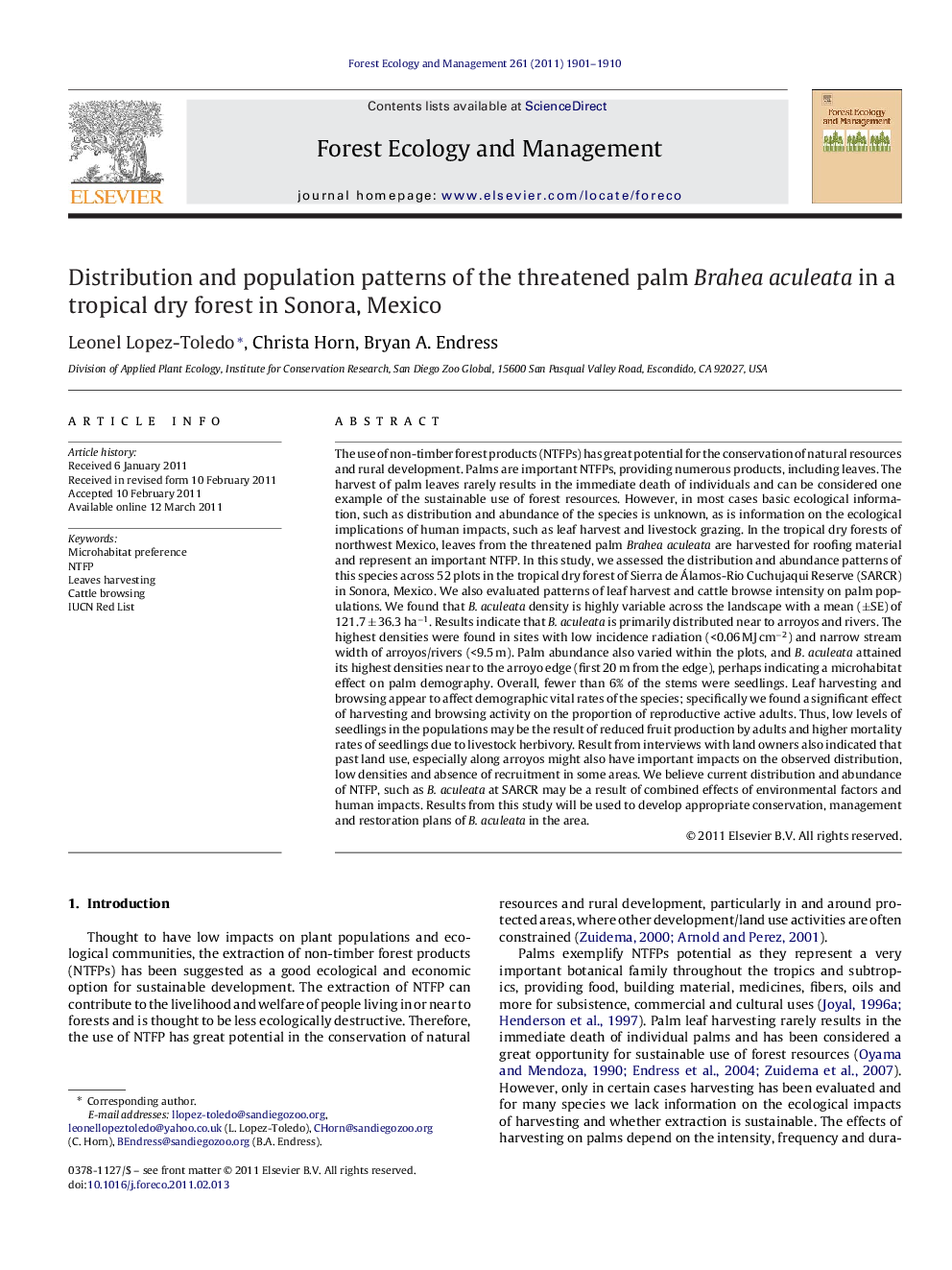| کد مقاله | کد نشریه | سال انتشار | مقاله انگلیسی | نسخه تمام متن |
|---|---|---|---|---|
| 87879 | 159270 | 2011 | 10 صفحه PDF | دانلود رایگان |

The use of non-timber forest products (NTFPs) has great potential for the conservation of natural resources and rural development. Palms are important NTFPs, providing numerous products, including leaves. The harvest of palm leaves rarely results in the immediate death of individuals and can be considered one example of the sustainable use of forest resources. However, in most cases basic ecological information, such as distribution and abundance of the species is unknown, as is information on the ecological implications of human impacts, such as leaf harvest and livestock grazing. In the tropical dry forests of northwest Mexico, leaves from the threatened palm Brahea aculeata are harvested for roofing material and represent an important NTFP. In this study, we assessed the distribution and abundance patterns of this species across 52 plots in the tropical dry forest of Sierra de Álamos-Rio Cuchujaqui Reserve (SARCR) in Sonora, Mexico. We also evaluated patterns of leaf harvest and cattle browse intensity on palm populations. We found that B. aculeata density is highly variable across the landscape with a mean (±SE) of 121.7 ± 36.3 ha−1. Results indicate that B. aculeata is primarily distributed near to arroyos and rivers. The highest densities were found in sites with low incidence radiation (<0.06 MJ cm−2) and narrow stream width of arroyos/rivers (<9.5 m). Palm abundance also varied within the plots, and B. aculeata attained its highest densities near to the arroyo edge (first 20 m from the edge), perhaps indicating a microhabitat effect on palm demography. Overall, fewer than 6% of the stems were seedlings. Leaf harvesting and browsing appear to affect demographic vital rates of the species; specifically we found a significant effect of harvesting and browsing activity on the proportion of reproductive active adults. Thus, low levels of seedlings in the populations may be the result of reduced fruit production by adults and higher mortality rates of seedlings due to livestock herbivory. Result from interviews with land owners also indicated that past land use, especially along arroyos might also have important impacts on the observed distribution, low densities and absence of recruitment in some areas. We believe current distribution and abundance of NTFP, such as B. aculeata at SARCR may be a result of combined effects of environmental factors and human impacts. Results from this study will be used to develop appropriate conservation, management and restoration plans of B. aculeata in the area.
► Distribution and population patterns of the palm Brahea aculeata were investigated.
► B. aculeata is distributed in arroyos with its highest densities near to the edge.
► Leaf harvesting and cattle browsing appear to affect demographic vital rates.
► Population patterns are result of interactions among environmental and human factors.
Journal: Forest Ecology and Management - Volume 261, Issue 11, 1 June 2011, Pages 1901–1910